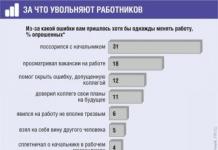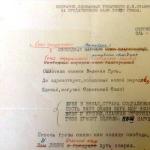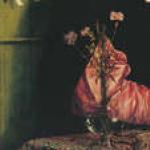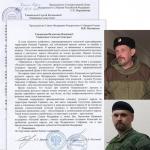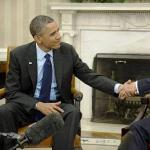The future twice Hero of the Soviet Union, one of the best Soviet aces, Grigory Andreevich Rechkalov, was born on February 9, 1920 in the village of Khudyakovo, Irbitsky district, into an ordinary peasant family. At the end of 1937, on a Komsomol ticket, young Rechkalov went to a military pilot school in Perm, which he successfully graduated from in 1939. After distribution, Grigory, with the rank of junior lieutenant, is sent to serve in the 55th Fighter Aviation Regiment, which has given the country many famous pilots.
At the time Rechkalov joined the 55th IAP, it was equipped with I-153, I-16 and UTI-4 aircraft and was part of the 1st KOVO high-speed bomber brigade. In 1940, the regiment was transferred to the 20th mixed aviation division, which was part of the Air Force of the Odessa Military District. The regiment was located on the outskirts of the small town of Balti near the border with Romania.
On June 22, 1941, Grigory Rechkalov arrived at the disposal of his regiment from Odessa, where he passed a medical flight commission, which wrote him off from flying work; the pilot had color blindness and could not distinguish colors well. By that time, the first losses had already been noted in the regiment, and combat work was in full swing. Having reported his arrival to the unit and decommissioned from flights, Rechkalov immediately receives his first combat mission - to take documents to the neighboring unit in an I-153 fighter. The chief of staff of the regiment, Major Matveev, did not even pay attention to the doctors’ conclusions; there was no time for that. Thus, unexpectedly, a very difficult task was solved for the fighter pilot, which had tormented him all the way on the way to the regiment. On his first combat mission, Grigory Rechkalov met the enemy in battle, survived and was able to help out his comrade.
In the future, chance will intervene more than once in the fate of the ace pilot, which will provide him with the opportunity to return to the skies. Talking about them would take too much time. It is only worth saying that after a month of the war, having 3 downed German planes in his combat account, Rechkalov was seriously wounded in the leg and, wounded, brought his I-16 to the airfield, from where he was immediately transported to the hospital. At the hospital he undergoes a very complex operation on his right leg. This wound put him out of action for almost a year. In April 1942, having escaped from the reserve air regiment, where the pilot was retraining on the Yak-1, he returned to his hometown, now the 16th GvIAP.
From this moment on, a new stage of his flying career begins with the call sign “RGA”. Ahead of him awaits retraining for the American P-39 Airacobra fighter, the menacing sky of the Kuban, the first Golden Star of the Hero, fierce battles in the skies over Iasi, the second Golden Star and finally the sky of Berlin. This segment also included some confrontation with the famous Soviet ace Pokryshkin, which received an unexpected development after the end of the war and which they previously preferred not to talk about out loud.
Grigory Rechkalov entered the list as the most successful ace, having won the most victories on the P-39 Airacobra fighter. By the end of the war, his Cobra had 56 stars, which symbolized the pilot’s 53 personal and 3 group victories. Rechkalov was the second most successful Allied pilot. He had 61 personal victories and 4 group victories.
Among the German planes shot down by Grigory Rechkalov were:
30 Me-109 fighters;
5 FW-190 fighter
2 Me-110 fighters;
11 Ju-87 bombers
5 Ju 88 bombers
3 Ju 52 transport aircraft
2 He-111 bombers
2 light reconnaissance aircraft Fi 156
1 Hs 126 fighter-spotter
Conflict with Pokryshkin
For those who were interested in the history of the 55th IAP, which later turned into the 16th Guards Fighter Aviation Regiment, and subsequently the 9th GvIAD, which was commanded by Pokryshkin from July 1944, the strained relationship between the division commander and one of the best Soviet aces twice Hero of the Soviet Union Grigory Andreevich Rechkalov. At one time, the aviation community even waged serious debate on the vastness of the World Wide Web, trying to understand the nature of the relationship between the two famous Soviet aces. Many believed that the reasons lay in their aerial rivalry, while a variety of aspects of their combat interaction were taken into account.

Aces pilots of the 9th Guards Aviation Division at the Bell P-39 Airacobra fighter G.A. Rechkalova. From left to right: Alexander Fedorovich Klubov, Grigory Andreevich Rechkalov, Andrei Ivanovich Trud and commander of the 16th Guards Fighter Aviation Regiment Boris Borisovich Glinka.
Whether this is true or not, over time it began to seem that the strained relationship between the two pilots, which led to a serious conflict, was connected with their personal accounts of downed aircraft. These assumptions were confirmed by Rechkalov’s relatives, in particular his wife Anfisa and daughter Lyubov spoke about this. According to the daughter of the famous ace, after the end of the Great Patriotic War, Grigory Rechkalov, working with TsAMO documents, found 3 of his planes shot down in 1941 on the account of Alexander Pokryshkin. Having learned about this, he most likely called his immediate military superior and expressed everything he thought about him. Alexander Pokryshkin’s reaction was not long in coming; after this conversation, Rechkalov was forgotten, and access to the TsAMO archives was closed to him. Even another Soviet ace Georgy Golubev, who was Pokryshkin’s wingman and was friends with Rechkalov during the war, in his book “Paired with the Hundredth,” writes practically nothing about his wartime friend, building the entire narrative around Pokryshkin’s personality. According to the relatives of Grigory Rechkalov, he maintained his opinion that the 3 planes he shot down were attributed to Pokryshkin until his death in 1990.
Rechkalov’s personal combat account since 06/22/1941 opens with the following enemy aircraft shot down: on June 26 in the Ungheni area he shot down an Me-109 fighter, on June 27 an Hs 126 fighter-spotter and on July 11 a Ju 88 bomber. However, already a month after the start of the war, Grigory Rechkalov receives a serious wound in the leg. During a combat mission on July 26, 1941, to escort seven I-153s that flew out on an attack mission, Rechkalov was part of a flight of I-16 escort fighters. In the Dubossary area, when approaching the target, a group of aircraft comes under intense German anti-aircraft fire. During the shelling, Rechkalov was wounded; the hit on the plane was so strong and accurate that the fighter's rudder pedal was broken in half, and the pilot's foot was seriously damaged.
During the pilot's absence, many documents of the 55th IAP were destroyed during the retreat from Odessa. It is possible that Rechkalovo’s account was “zeroed” also because during his almost year-long absence the regiment transferred to another unit, while information about the pilot’s victories remained in the documents of the 20th Mixed Air Division. The report on the combat work of the new 16th Guards Aviation Regiment was already compiled in the reserve regiment, so there was nowhere to get data for 1941 from. This would be a fairly convincing version, if not for the fact that many pilots of the 55th IAP, even despite the burning of staff documents, the downed planes were recorded again and only the “returnee” Grigory Rechkalov had to start his combat journey from scratch. One way or another, until the end of his life Rechkalov was convinced that 3 victories of 1941 were taken from his combat account, which, by some coincidence, ended up in Pokryshkin’s account.

Bell P-39 "Airacobra"
Many years after the end of the war, Grigory Rechkalov was asked what he valued most in his P-39Q Airacobra fighter, on which he won so many victories: the power of the fire salvo, speed, engine reliability, visibility from the cockpit? To this question, Rechkalov noted that all of the above, of course, played a role and these advantages are important, but in his opinion, the most important thing in the American fighter was... the radio. According to him, the Cobra had excellent radio communication, rare at that time. Thanks to her, the pilots in the group could communicate with each other, as if on the phone. Whoever saw what in the air immediately reported, so there were no surprises during the combat missions.
It is worth noting that the Airacobras have come a long way, constantly modernizing and improving, including taking into account the requirements of the Soviet side. To assemble and fly the fighters that were in the USSR, a special group of the Air Force Research Institute was created, which began a thorough study of the flight performance characteristics of the Airacobra, as well as eliminating various identified defects. The first versions of the P-39D were distinguished by inflated characteristics. For example, the speed at the ground was only 493 km/h, and at an altitude of 7000 m – 552 km/h, the maximum speed that the aircraft managed to reach at an altitude of 4200 m was 585 km/h. The higher the plane climbed, the lower its rate of climb became. At an altitude of 5000 meters it was 9.6 m/s, but at the ground it was already 14.4 m/s. The takeoff and landing characteristics of the fighter were also quite high. The plane's mileage was 350 meters, and the takeoff run was 300 meters.

The plane had a good flight range, which was equal to 1000 km. and could stay in the sky for 3.5 hours. The fighter's fairly good characteristics at low altitudes allowed it to effectively act as an escort vehicle for Soviet Il-2 attack aircraft and protect them from German fighters, as well as successfully fight German dive bombers and work quite confidently against ground targets. Over time, the characteristics of the fighter only grew and were brought to a very high level.
It is worth noting that American engineers, designers and workers were sympathetic to the proposals coming from the Soviet Air Force, which related to improving the design of the fighter. Bell company specialists, when coming to the USSR, visited military units and tried to study the circumstances and causes of accidents on the spot. In turn, Soviet engineers and pilots were also sent to the United States, where they assisted the Bell company in improving the P-39 Airacobra fighter. The largest center of Soviet aviation science, the Central Aerohydrodynamic Institute named after. Zhukovsky known by the abbreviation TsAGI.

Work to improve the aircraft was largely based on improving engine performance and reducing the take-off weight of the fighter. Already from the P-39D-2 version, the aircraft began to be equipped with a new Allison V-1710-63 engine, the power of which, without turning on the afterburner mode, was 1325 hp. To reduce the take-off weight of the fighter, the ammunition load of wing machine guns was reduced from 1000 to 500 rounds per barrel, and for fuselage machine guns from 270 to 200 rounds per barrel. Also, the hydraulic system for reloading the gun was completely removed from the aircraft; it could only be reloaded at the airfield. In addition, units that were installed on the P-40 Kittyhawk aircraft, which also arrived in the USSR under Lend-Lease, were installed in the air, fuel and oil systems.
In 1942, the most massive and best modification of the P-39Q fighter went into production; Rechkalov flew the P-39Q-15 fighter. Unlike other models, the fighter with the letter Q had 2 large-caliber 12.7-mm machine guns installed instead of 4 wing-mounted rifle-caliber machine guns. Among the fighters of this series there were also special lightweight models, for example, the P-39Q-10 version was distinguished by the fact that it had no wing machine guns completely.
Sources used:
www.airwiki.org/history/aces/ace2ww/pilots/rechkalov.html
www.airwar.ru/history/aces/ace2ww/pilots/rechkalov.html
www.airaces.narod.ru/all1/rechkal1.htm
www.vspomniv.ru/P_39
“Rechkalov won his first victory on June 26, 1941 on the I-153 Chaika biplane, shooting down a Messer with a volley of Eres, who considered him easy prey. He increased his combat score by flying the I-16, was seriously wounded, but returned to duty, fought on “yaks” and “airacobras”, received his first Gold Star for an air battle in the Kuban, where in just a month and a half he “killed” 17 German aircraft, and the second - in the summer of ’44, when he brought the count of personal victories to fifty. even among the fearless “Stalinist falcons”, Rechkalov never shied away from battle, and his “Airacobra” stood out with its defiantly bright coloring - a red propeller spinner, seven-row victory stars on the nose, the formidable initials RGA on the rear fuselage..."
The future twice Hero of the Soviet Union, one of the best Soviet aces, Grigory Andreevich Rechkalov, was born on February 9, 1920 in the village of Khudyakovo, Irbitsky district, into an ordinary peasant family. At the end of 1937, on a Komsomol ticket, young Rechkalov went to a military pilot school in Perm, which he successfully graduated from in 1939. After distribution, Grigory, with the rank of junior lieutenant, is sent to serve in the 55th Fighter Aviation Regiment, which has given the country many famous pilots.
At the time Rechkalov joined the 55th IAP, it was equipped with I-153, I-16 and UTI-4 aircraft and was part of the 1st KOVO high-speed bomber brigade. In 1940, the regiment was transferred to the 20th mixed aviation division, which was part of the Air Force of the Odessa Military District. The regiment was located on the outskirts of the small town of Balti near the border with Romania.
On June 22, 1941, Grigory Rechkalov arrived at the disposal of his regiment from Odessa, where he passed a medical flight commission, which wrote him off from flying work; the pilot had color blindness and could not distinguish colors well. By that time, the first losses had already been noted in the regiment, and combat work was in full swing. Having reported his arrival to the unit and decommissioned from flights, Rechkalov immediately receives his first combat mission - to take documents to the neighboring unit in an I-153 fighter. The chief of staff of the regiment, Major Matveev, did not even pay attention to the doctors’ conclusions; there was no time for that. Thus, unexpectedly, a very difficult task was solved for the fighter pilot, which had tormented him all the way on the way to the regiment. On his first combat mission, Grigory Rechkalov met the enemy in battle, survived and was able to help out his comrade.
In the future, chance will intervene more than once in the fate of the ace pilot, which will provide him with the opportunity to return to the skies. It is only worth saying that after a month of the war, having 3 downed German planes in his combat account, Rechkalov was seriously wounded in the leg and, wounded, brought his I-16 to the airfield, from where he was immediately transported to the hospital. At the hospital he undergoes a very complex operation on his right leg. This wound put him out of action for almost a year. In April 1942, having escaped from the reserve air regiment, where the pilot was retraining on the Yak-1, he returned to his hometown, now the 16th GvIAP.
From this moment on, a new stage of his flying career begins with the call sign “RGA”. Ahead of him awaits retraining for the American P-39 Airacobra fighter, the menacing sky of the Kuban, the first Golden Star of the Hero, fierce battles in the skies over Iasi, the second Golden Star and finally the sky of Berlin. This segment also included some confrontation with the famous Soviet ace Pokryshkin, which received an unexpected development after the end of the war and which they previously preferred not to talk about out loud.
Grigory Rechkalov went down in history as the most successful ace, having won the most victories on the P-39 Airacobra fighter. By the end of the war, his Cobra had 56 stars, which symbolized the pilot’s 53 personal and 3 group victories. Rechkalov was the second most successful Allied pilot. He had 61 personal victories and 4 group victories.
Among the German planes shot down by Grigory Rechkalov were:
30 Me-109 fighters;
5 FW-190 fighter
2 Me-110 fighters;
11 Ju-87 bombers
5 Ju-88 bombers
3 Ju-52 transport aircraft
2 He-111 bombers
2 light reconnaissance aircraft Fi-156
1 Hs-126 spotter fighter

By June 1944, deputy regiment commander Rechkalov made 415 combat missions, participated in 112 air battles and personally shot down 48 enemy aircraft and 6 in the group.
In total, during the war, Rechkalov flew 450 combat missions and 122 air battles. Data on downed aircraft vary. According to some sources, 56 aircraft and 6 aircraft in the group were shot down. According to M. Bykov, Rechkalov shot down 61 enemy aircraft.
After the war, Grigory Rechkalov continued to serve in the air force and graduated from the Air Force Academy in 1951. In 1959 he was transferred to the reserve. Lived in Moscow, since 1980 - in the city of Zhukovsky, Moscow region. Died on December 22, 1990 in Moscow. He was buried in the village of Bobrovsky (Sysertsky district, Sverdlovsk region).
(February 9, 1920 - December 22, 1990) - twice Hero of the Soviet Union, fighter pilot, major general of aviation.....
Rechkalov Grigory Andreevich
One of the most successful Soviet aces, distinguished by his swiftness and indomitability.
Statistics
During the war he flew more than 450 combat missions, conducted 122 air battles, won, according to updated data, 61 victories personally (according to other sources, 56) and 4 in a group, for which he was awarded twice (in May 1943 and July 1944) title of Hero of the Soviet Union.
Biography
Born on February 9, 1920 in the village of Khudyakovo, Irbit district, Perm province, into a peasant family. At a young age he learned to fly at a local flying club. He entered and graduated from the military pilot school in Perm in 1939. After promotion to rank, the sergeant was sent to serve in the 55th Fighter Aviation Regiment in Kirovograd. He flew on the I-153 fighter.
Who was
During the war years, he grew up in the regiment (which became the 16th Guards in March 1942) from junior lieutenant to major. He flew out on attack missions, escorted attack aircraft, and for reconnaissance, but considered his main task to be conducting air battles with enemy aircraft, often conducting “free hunts.” He finished combat operations as an inspector of piloting techniques in the 9th Guards Fighter Division, commanded by his teacher, three times Hero of the Soviet Union, Colonel A.I. Pokryshkin. After the war he continued to serve in the Air Force. In 1951 he graduated from the Air Force Academy in Monino. Since 1959 in reserve, he lived first in Moscow, since 1980 - in the city of Zhukovsky, Moscow region. He wrote books about military everyday life: “Visiting Youth”, “The Smoky Sky of War”, “In the Sky of Moldova”.
What is he famous for?
In his final years he fought on an Airacobra, decorated with numerous stars on the engine according to the number of victories won, and his own initials RGA, painted on the rear fuselage. According to the ace himself, what he most appreciated in his fighter was its excellent radio station, which allowed him to constantly maintain reliable radio contact with other pilots and the ground. Probably, no other Soviet ace personally has such a variety of types of officially shot down enemy aircraft as Rechkalov: Heinkel and Junkers bombers, Henschel and Junkers attack aircraft, Messerschmitt and Focke fighters. Wulf", liaison "physicallers", reconnaissance and transport personnel, as well as relatively rare trophies - the Italian "Savoy" and the Polish PZL-24, used by the Royal Romanian Air Force.



Battle sites
Fought on the Southern, North Caucasian, 1st, 2nd and 4th Ukrainian fronts.
Cases of manifestation of the highest degree of heroism
During the first two weeks of the battle in Kuban Art. Lieutenant Rechkalov personally shot down 8 enemy aircraft in air battles and was nominated for the title of Hero of the Soviet Union for the first time. He achieved his greatest success on October 1 and November 1, 1943, shooting down three Junkers-87 dive bombers on each of these days in the area of the Molochnaya River and north of Perekop.
Circumstances of death
State awards
Twice Hero of the Soviet Union was awarded the Order of Lenin, four Orders of the Red Banner, two Orders of the Red Star, the Order of Alexander Nevsky and the Order of the Patriotic War, 1st degree.
Rechkalov Grigory Andreevich (1920-1990).
Military pilot, twice Hero of the Soviet Union, lieutenant general.
Grigory Andreevich Rechkalov was born on February 9, 1920 in the village of Khudyakovo, Irbitsky district, Perm province (now the village of Zaykovo, Irbitsky district, Sverdlovsk region) into a peasant family.
At the age of 14 he began working as an electrician at a local mill. Later he moved to Sverdlovsk and began studying at the factory school of the Verkh-Isetsky plant. At the same time, he began to study in a gliding club.
In 1937, he was sent to the Perm Military Pilot School on a Komsomol ticket and in 1939, with the rank of sergeant, he was enlisted in the 55th Aviation Fighter Regiment in Kirovograd. During his service in the regiment, he took part in the campaign against Bessarabia. On the eve of the Great Patriotic War, the regiment was based on the outskirts of the city of Balti.
The day before the start of the war, Rechkalov underwent a medical flight commission and was rejected due to discovered color blindness. However, on June 22, when he returned to the unit, the regimental chief of staff gave him an urgent task to deliver documents and did not even look at the medical report.
At the beginning of the war, he flew the I-153 Chaika fighter. He won his first aerial victory on June 27, shooting down an Me-109 with a rocket. Already in the first month of the war, Grigory Rechkalov shot down 3 enemy planes, was wounded himself, but brought the plane to the airfield. He was sent to a hospital, and then to a reserve aviation regiment, to master the Yak-1 aircraft, but in April 1942 he fled to his regiment, which by that time had received the rank of Guards and became known as the 16th Guards Fighter Aviation Regiment (16 GvIAP) .
In the regiment, he mastered the American Bell P-39 Airacobra fighter. Since the spring of 1943, the regiment entered into battles with the enemy in the Kuban. In the first two weeks of fighting, Grigory Rechkalov shot down 19 enemy aircraft, and in three combat missions he shot down 2 aircraft, and in one - 3.
On May 24, 1943, he was awarded the title of Hero of the Soviet Union.
By June 1944, deputy regiment commander Rechkalov made 415 combat missions, participated in 112 air battles and personally shot down 48 enemy aircraft and 6 in the group.
On July 1, 1944, for successfully conducted air battles, he was awarded the second Gold Star medal.
G.A. Rechkalov with his R-39 fighter.
In total, during the war, Rechkalov flew 450 combat missions and 122 air battles. Data on downed aircraft vary. According to some sources, 56 aircraft and 6 aircraft in the group were shot down. According to M. Bykov, Rechkalov shot down 61 enemy aircraft. Rechkalov Grigory Andreevich is the absolute world champion in victories on the Bell P-39 “Airacobra” fighter. Probably, no other Soviet ace has such a variety of types of officially shot down enemy aircraft on his personal account as G.A. Rechkalov. Here are He-111 and Ju-88 bombers and Ju-87 and Hs-129 attack aircraft and Hs-126 and FW-189 reconnaissance aircraft and Me-110, Me-109, FW-190 fighters and Ju-52 transport aircraft and even relatively rare trophies - the Italian Savoy and the Polish PZL-24.
After the war, Grigory Rechkalov continued to serve in the air force.
Rechkalovs Grigory Andreevich and Anfisa Yakovlevna.
In 1951 he graduated from the Air Force Academy.
In 1959 he was transferred to the reserve. He lived in Moscow, and since 1980 - in the city of Zhukovsky, Moscow Region, where he died on December 22, 1990. He was buried in the village of Bobrovsky (Sysertsky district, Sverdlovsk region).
Awards:
-2 medals “Gold Star” (05/24/1943, 07/01/1944);
-The order of Lenin;
-4 Orders of the Red Banner;
-Order of Alexander Nevsky;
-Order of the Patriotic War, 1st degree;
-2 Orders of the Red Star;
-medal “For Military Merit”;
-medal “For victory over Germany in the Great Patriotic War of 1941-1945”;
- anniversary medal “Twenty years of Victory in the Great Patriotic War of 1941-1945”;
- anniversary medal “Thirty Years of Victory in the Great Patriotic War of 1941-1945”;
-jubilee medal “Forty years of Victory in the Great Patriotic War of 1941-1945.”
Honorary citizen of Balti and other cities.
Born on February 9, 1920 in the village of Khudyakovo, now the village of Zaykovo, Sverdlovsk Region, in a peasant family. He graduated from 6 classes of junior high school and the flying club. Since 1938 in the Red Army, a year later he graduated from the Perm Military Aviation Pilot School.
He took part in the battles of the Great Patriotic War from the first day. He fought on the Southern, North Caucasian, 1st, 2nd and 4th Ukrainian fronts.
By May 1943, the flight commander of the 16th Guards Fighter Aviation Regiment (216th Mixed Aviation Division, 4th Air Army, North Caucasus Front) of the Guard, Senior Lieutenant G. A. Rechkalov, made 194 combat missions, shot down in 54 air battles 12 enemy aircraft personally and 2 as part of a group. On May 24, 1943, for courage and military valor shown in battles with enemies, he was awarded the title of Hero of the Soviet Union.
By June 1944, the deputy commander of the same regiment (9th Guards Fighter Aviation Division, 7th Fighter Aviation Corps, 5th Air Army, 2nd Ukrainian Front) Guard Captain G. A. Rechkalov made 415 combat missions and participated in 112 air battles, he personally shot down 48 enemy aircraft and 6 in a group with his comrades. On July 1, 1944, he was awarded the second Gold Star medal.
In total, he performed about 450 successful combat missions, in 122 air battles he shot down 56 aircraft personally and 6 as part of a group.
After the war he continued to serve in the Air Force. In 1951 he graduated from the Air Force Academy. Since 1959, General - Aviation Major G. A. Rechkalov has been in reserve. Lived in Moscow. Awarded the Order of Lenin, the Red Banner (four times), Alexander Nevsky, the Order of the Patriotic War 1st degree, the Red Star (twice), and medals. A bronze bust was erected in the homeland of the Twice Hero. He wrote books about military everyday life - “Visiting Youth”, “The Smoky Sky of War”, “In the Sky of Moldova”. Died on December 22, 1990.
This brilliant air fighter was distinguished by a very contradictory and uneven character. Having demonstrated an example of courage, determination and discipline in one mission, in the next he could be distracted from the main task and just as decisively begin the pursuit of a random enemy. His military fate was intertwined with the fate of A.I. Pokryshkin; he flew with him in the group, replaced him as a commander, then as a regiment commander. Alexander Ivanovich himself considered Rechkalov’s best qualities to be directness and frankness.
Best of the day
Grigory Rechkalov was born on February 9, 1920 in the village of Khudyakovo, Irbit district, Perm province. He learned to fly at a local flying club. After being drafted into the Red Army, in 1938 he was admitted to the Perm Military Aviation School. The same one that 5 years before Rechkalov arrived there, his future commander, A.I. Pokryshkin, graduated. True, at that time the school graduated only aviation technicians. Having become a military pilot in 1939, Rechkalov served in units of the Red Army Air Force of the Odessa Military District.
Despite the fact that a medical examination determined that he was color blind, he won the right to continue serving and in 1941 was assigned to the 55th Fighter Wing with the rank of sergeant. The regiment was in Moldova and was re-equipped with new types of fighters during the summer. However, Rechkalov’s squadron was still armed with outdated I-153s.
The beginning of the war saved Rechkalov from being written off from flying duty: the regiment commander ignored another doctor’s report that was disastrous for the pilot. Rechkalov made his first combat missions to attack enemy troops on an I-153 - a biplane with a blue tail number "13". During the 1st week of the war, he flew about 30 attack missions and conducted 10 air battles.
On the same machine he won his first victory - on June 27, 1941, shooting down one of the Me-109 attacking him with a salvo of rockets. Like Pokryshkin, he later said that his number 13 was “unlucky for the enemy.” On it, however, he suffered an accident due to engine failure: a connecting rod broke, and, having jacked up, Rechkalov almost died.
After the accident, he began flying the I-16, and soon shot down first a Polish PZL P-24 fighter (Romanian pilots flew them), and then a German Ju-88 bomber. On one of the flights he was wounded in the head and leg, brought the car to his airfield and ended up in the hospital for a week, where he underwent 3 operations - the wound in the leg turned out to be serious.
After a relative recovery, the pilot was assigned to a reserve regiment, but upon learning that it was equipped only with U-2 aircraft, he decisively turned around and went back to the district air force headquarters. There he achieved a meeting with the commander and managed to demand a referral for retraining in a fighter regiment. Only in the summer of 1942, having mastered the Yak-1 and having once again been in the hospital - the fragment was difficult to come out of, Rechkalov, by hook or by crook, returned to his regiment - the 55th IAP, which by that time had received the Guards name (16th GvIAP). Here, on the Southern Front, he makes about a hundred combat sorties, participating in 20 battles, bringing the number of his victories to 6, shooting down 4 aircraft personally and 2 as part of a group.
In December 1942, the regiment was recalled from the front to be re-equipped with American P-39 Airacobra fighters. By the spring of 1943, having received new vehicles in the North Caucasus, the regiment went to Kuban. On the first flight, Rechkalov and Pokryshkin each shot down one Me-109F in an air battle over the village of Krymskaya. On April 15, Rechkalov shot down a Ju-88 in a battle with a large group of bombers. The next day - Me-109 near the village of Kholmskaya and two more Me-109s until the 21st.
8 days later, 6 "Air Cobras" of Captain A. Pokryshkin began a battle with a Ju-87 group accompanied by 4 Me-109 fighters over the front line. Pokryshkin attacked the bombers, and Rechkalov took up the fighters. As a result, both shot down 2 enemy aircraft and thwarted their attack.
In just the first 2 weeks of the battle in Kuban, the deputy commander of the 1st squadron of the 16th GvIAP Guard, Senior Lieutenant Rechkalov, personally shot down 8 enemy aircraft (7 Me-109 and Ju-88) in air battles and was nominated for the title of Hero of the Soviet Union. Recalling those days, Grigory Andreevich later wrote:
“There wasn’t a single flight where we weren’t fighting. At first, the enemy acted impudently. A group would jump out, pile on, and look, first one, then another of our planes, caught fire, rushing to the ground. But we quickly figured out the tactics of the German pilots and began to use new ones techniques: walking in pairs rather than in flights, it is better to use for communication and radio guidance, echeloning groups of aircraft with the so-called “whatnot.” It was during these days that the “falcon strike”, developed by Alexander Ivanovich Pokryshkin, was born in our regiment.”
In the Kuban, Rechkalov fought on Airacobras P-39D-1, P-39D-2, with tail number “40”, won 19 victories, destroying 2 aircraft in one battle three times and 3 times once. He usually flew as the leader of the pair in Pokryshkin's group. On May 24, 1943 he became a Hero of the Soviet Union. Rechkalov made his last double already near Iasi, shooting down 2 Ju-87 dive bombers in a short and decisive attack.
Infinitely brave personally, daring, full of contempt for his enemies, Rechkalov fought in a decorated Airacobra, in addition to the standard coloring and elements of quick recognition, which bore stars according to the number of downed enemies and the formidable letters R.G.A. (pilot's initials) on the rear fuselage.
In the summer of 1943, at the head of eight fighters, he attacked a large group of Ju-87 dive bombers on the move at top speed, head-on, and personally shot down 3 of them. His group then shot down 5 Junkers and one Messer. In the fall of 1943, during the famous “hunt over the sea”, discovered by Pokryshkin, Rechkalov managed to shoot down 3 aircraft - 2 three-engine Ju-52 - a fuel tanker in one flight and an Italian Savoy flying boat.
He enjoyed flying to “hunt”, loved to climb to high altitudes, about 6000 meters, and, using his exceptionally sharp vision, quickly attack the chosen victim. The ace flew on missions with different pilots. Among them were A. Trud, G. Golubev, V. Zherdev. He fought over the Sea of Azov when the regiment operated with the 4th Ukrainian Front over the Crimea in the spring of 1944, participating in the Kishinev campaign, which sent it back to the places where it made its first missions in this war.
He became a captain, deputy regiment commander with rich combat experience. In July 1944, Boris Glinka was seriously wounded and Rechkalov began to temporarily perform his duties. On July 1, 1944, he was awarded a second Gold Star medal, for 48 individual and 6 group victories, won in 415 combat missions and 112 air battles (as of June 1944).
A distinctive feature of Rechkalov was that he quickly grasped the idea of each battle and, no matter how the situation developed in the air, he almost always completed the fight he started, achieving victory. His ability to interact with other groups allowed him to confidently fight with numerically superior enemy forces.
The air battle carried out by our aces on July 16, 1944 can be called truly classic. The fighting qualities of Soviet commanders and ordinary pilots were revealed in all their splendor. 12 aircraft of the 16th Guards Regiment under the command of G. A. Rechkalov in the Sushno area protected ground troops from air raids, which were in the starting position for the attack. The fighters of the strike group patrolled at an altitude of 2000 meters. A cover group headed by the leader, Guard Lieutenant Colonel A.I. Pokryshkin, walked above them at an elevation of 400 - 500 meters. And the top tier was occupied by a support group under the command of Hero of the Soviet Union Guard, Senior Lieutenant A. Trud.
Soon it was noticed that a large group of enemy vehicles was heading east. It consisted of more than 30 Ju-87 and Hs-129 and 8 FW-190. Seeing our planes, the enemy formed a column one at a time, closing a defensive circle, and began randomly throwing bombs.
The fighters of Rechkalov and Pokryshkip rushed to attack the bombers, and Trud engaged the fighters in battle. A giant carousel spun. With his four, Pokryshkin struck from the inside of the circle and shot down the Hs-129 with the first attack. With the fourth attack he managed to set fire to the Ju-87. Rechkalov and his wingmen rushed into the attack from below and from behind. He was the first to bring down an enemy bomber to the ground. The same fate befell three more Junkers from the well-aimed bursts of Vakhnenko, Klubov and Ivanov. At the exit of the fourth attack, Klubov doubled his score. Thus, 9 downed enemy aircraft fell to the ground.
However, Rechkalov’s desire to increase his personal score (even to the point of trying to take credit for other people’s victories) did not always have a positive effect on the leadership of his subordinates. He could leave the battle with the fighters, although the pilots of his group were still fighting, and rush at the bombers, or even take the group away without permission from higher command. Acting the old fashioned way, he sent small groups of fighters on patrol, which often had to fight outnumbered.
The pilot's combat score grew very quickly, and Rechkalov rose just as quickly in command positions. After Pokryshkin was appointed deputy regiment commander, Rechkalov became commander of the 1st squadron, and when Pokryshkin became division commander, he was appointed commander of the 16th GvIAP. However, this position was fatally unlucky. After the death of pilot Ivan Olefirenko (due to the negligence of a mechanic), Rechkalov was removed from the post of regimental commander and Boris Glinka was appointed there. However, a few days later he was seriously wounded in an air battle and Rechkalov again began to temporarily perform his duties. But he was soon replaced in this position by another Soviet ace - Ivan Ilyich Babak...
Soon the regiment moved to the 1st Ukrainian Front and took part in the Lvov-Sandomierz operation. Then he acted over Poland, over the Vistula and Oder. Rechkalov fought his last battles over Berlin in April 1945. By the end of the war, he became the most successful Airacobra pilot (44 victories), most of which he achieved in the P-39N-0 (number 42-747) and P-39Q-15 (number 42-547).
The Airacobra P-39Q-15 is widely known from newsreels as A.I. Pokryshkin’s fighter. But that's not true. It’s just that the cameramen filmed Alexander Ivanovich against the backdrop of this particular plane (apparently they wanted to show a lot of stars - marks of victories). It was on this car that Rechkalov ended the war.
The stars denoting aerial victories were painted on the left side of the aircraft's nose, and were located in exactly the same way as on the previous aircraft. The underwing heavy machine guns were removed. The red tops of the vertical tail and the spinner are the distinctive sign of the 16th GvIAP.
Many years after the end of the war, Grigory Rechkalov was once asked what he valued most in the Airacobra, on which he won so many victories: speed, the power of the fire salvo, visibility from the cockpit, engine reliability? Rechkalov replied that, of course, all the listed advantages of the machine are very important. But the most important thing... was the radio. This car had excellent radio communication, rare at that time. Thanks to her, the pilots in the group talked to each other as if on the phone. Whoever saw what, everyone knows right away. Therefore, they did not have any surprises during combat missions.
In February 1945, by order of the commander of the 9th Guards Fighter Aviation Division, Grigory Rechkalov was removed from command of the 16th Guards Aviation Regiment and appointed inspector of piloting technology of the 9th Guards Aviation Division, that is, to a position not related to personnel management. A.I. Pokryshkin himself wrote about this as follows:
"...The airfield was suddenly attacked by eight FW-190s. The group jumped out into a break in the clouds and dropped cluster fragmentation bombs. A pair of fighters were immediately directed at the enemy by radio. They were just making a training flight. The pilots managed to catch up with the departing enemy group and knocked out one "Fokker".
Our planes were not damaged by the dropped bombs. But squadron commander Veniamin Tsvetkov was caught in the explosions. During the bombing, he rushed to the plane to take off and repel the Fokkers. A large fragment pierced his back, causing a mortal wound. The doctors did not have time to take him alive to the hospital. [Note: Veniamin Pavlovich Tsvetkov had 15 personally shot down enemy aircraft and 2 as part of a group].
When I was informed about this attack on the airfield, the first thing I asked was: “Where were the fighters on duty?..”
It turned out that the command of the 16th Guards Regiment did not fulfill the established duty schedule over the airfield. Considering this a waste of effort, she did not raise the patrol unit in advance, according to the schedule. This was a gross violation. If the flight had been in the air, the raid would have been repelled as enemy planes approached the airfield. For failure to perform and other violations, the commander of the 16th air regiment was soon transferred to the position of inspector in the corps, not related to the management of personnel.
That's how it happens. The pilot gained combat experience, mastered technology, learned how to conduct air combat - he fights confidently, and has shot down more than a dozen enemy aircraft. Recognized for this with high awards. But his commanding qualities are not high, and as a leader he is weak. Apparently, in order to forge and cultivate these qualities in oneself, it is not enough to just be a brave and skillful air fighter. We must develop responsibility towards our subordinates, ask strict questions and be demanding, first of all, of ourselves.”
Despite all this, Grigory Rechkalov continued to fly combat missions until the end of the war. He finished it with 56 personal and 6 group victories, won in 450 successful sorties and 122 air battles (according to the latest research by Mikhail Bykov, 3 more personal victories won in the summer of 1941 were not credited to his combat account).
Probably, no other Soviet ace has such a variety of types of officially shot down enemy aircraft on his personal account as G. A. Rechkalov. Here are He-111 and Ju-88 bombers, Ju-87 and Hs-129 attack aircraft, Hs-126 and FW-189 reconnaissance aircraft, Me-110, Me-109, FW-190 fighters, and Ju transport aircraft. -52, and even relatively rare trophies - the Italian Savoy and the Polish PZL-24.
After the war, Grigory Andreevich remained in the Air Force service for a long time and graduated from the Air Force Academy. In 1959, 39-year-old General - Major of Aviation G. A. Rechkalov was transferred to the reserve. Lived and worked in Moscow.
